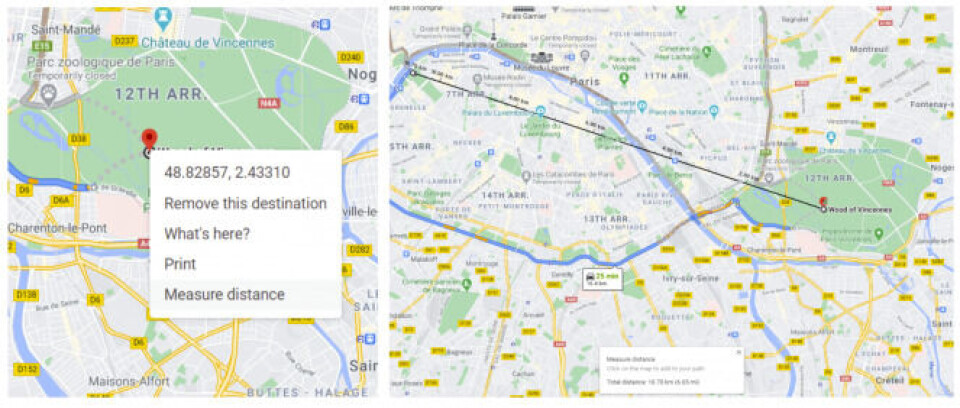-
French ski resorts report excellent Christmas despite less snow than last year
Bookings are up and non-snow related activities are also on the rise
-
Why was passport stamped when entering France?
EES began rollout in October
-
American celebrity jeweller robbed of ‘more than €1m’ at French Riviera Airbnb
Jewellery and cash stolen from rental property where Chris Aire was staying
New semi-confinement in France: What you can and cannot do
What the new lockdown rules that come into force across France on Saturday mean in practice for residents

President Macron announced last night that the semi-lockdown restrictions in place in 19 departments in France will apply nationwide from Saturday evening.
He said that if the country continues to make a real effort and remains united, despite the “pain and hardship” of the past year, “we’ll [soon] see the end of the tunnel”.
We explain the new rules.
Read more: Macron: Semi-confinement to extend to all France, schools to close
When do the new measures start?
The new rules will come into force from the evening curfew time of 19:00 on Saturday, April 3.
People who wish to travel to a different part of France for the semi-confinement can do so, as long as they travel this weekend (April 3 and 4).
Is all of France affected?
Yes. The measures, also described as “lockdown light”, which were in place across 19 departments in France, have now been extended across the entire country.
Why is it being referred to as semi-lockdown?
The semi-confinement rules are less strict than during full confinement, but aim to limit social interactions and slow the spread of the virus. You can go out within a radius of 10km from your home without an attestation form and without time restriction, apart from the curfew hours. You do need though to carry proof of address on you to show you are within this limit if asked by police.
What are the daytime rules?
- Non-essential shops closed (but hairdressers, bookshops and more are now considered essential)
- Everyone should work from home if possible
- Mandatory attestation forms needed for anyone travelling more than 10km away from home
- Travel between departments banned, unless for a permitted essential reason and within 30km of your home, or if you are travelling to an airport or station, or moving your main home
- No private gatherings or parties
- More checks in public space to limit public gatherings
- French nationals or residents currently abroad can travel back to France
What are the accepted reasons for going further than 10km (or 30km between departments, for people who live on borders or must travel further for specific reasons)?
- To buy necessary items
- For necessary journeys to care for dependents or to ensure childcare
- Imperative health reasons
- Imperative work or training reasons
- To go to a religious centre
- To take part in imperative administrative or legal work
- Moving house to your main home
- Travelling to train stations or airports
How can I calculate an accurate 10km or 30km radius around my home?
If you want to be certain that you will stay within the correct distances of your home, there are some tools that can help.
One has been created by Esri France, the French branch of the Environmental Systems Research Institute, which has created geographic information tool le Système d'Information Géographique (SIG).
This allows you to search for an address and draw a 10km radius around it, to check you will stay within it.
The government website also has a similar tool, available here. Map website Mappy.fr also has a tool, while Google Maps can also help you calculate a distance “as the crow flies”.
On Google, you can type in a destination, click Directions, and then right-click on the destination and click “measure distance”. You can then select two locations, one being your home. Google will then draw a straight line - with the distance shown - between your home and a given destination.
(Google Maps / Screenshot)
What other rules are there?
Crèches, primary schools, collèges, and lycées will close for three weeks, with classes being done at home for one week from Monday April 5.
From April 12 all schools and crèches in mainland France will go on holiday for two weeks at the same time, instead of school holidays being staggered by educational zone.
See more on the school rules and plans here.
Prime Minister Jean Castex has also confirmed that drinking alcohol in public will be banned.
What are the curfew rules?
The curfew times and rules remain the same as now. The curfew runs from 19:00 to 06:00 seven days a week.
You still need the usual curfew attestation form to leave your house during the curfew and can only do so for one of the reasons on the form, such as going to work.
How long is this going to last?
Four weeks from the evening of Saturday April 3, so until May 1 at least. This is subject to the health situation, however, and could change.
How do I get the forms for journeys of more than 10km and for the curfew?
The forms are available as hard copy printouts, or in digital format. They are available via the government's website (the current one is for the 19 departments and is expected to be replaced by Saturday) and the TousAntiCovid smartphone app.
They are available in PDF and TXT formats. There are separate forms for going out during the day and for going out after curfew.
There are also separate declaration forms for international travel on this page here. These are available in French and English.
Related stories
Macron: Semi-confinement to extend to all France, schools to close
Covid-19: Border and variant updates for March 31
Macron defends Covid strategy as calls mount for total lockdown
























